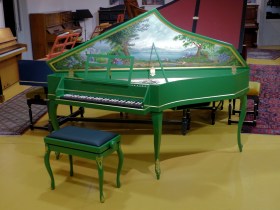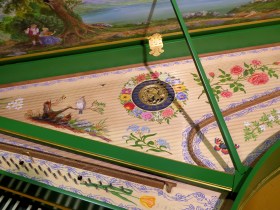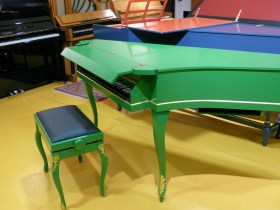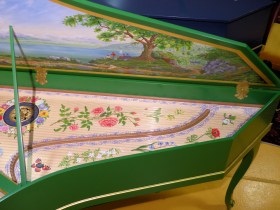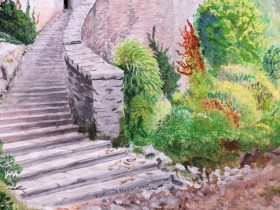spinet after J. H. Silbermann
keyboard compass: 5 octaves (F1 - f3)
lute
wooden jacks, Delrin plectra
Description
Audio Sample:
Johann Heinrich Silbermann (Strasbourg 1727 - 1799) was the youngest son of Andreas Silbermann. In 1782 Johann Nikolaus Forkel, the first biographer of Johann Sebastian Bach, wrote „His instruments are too well known in the world of music to make it necessary…to say anything in their praise.“
We can see from the unusually high number of (at least) eight identical instruments which have survived how popular the spinets of Johann Heinrich were even in his lifetime. The spinet of Silbermann is a so-called bentside spinet, a model that was first developed by the Italian Girolamo Zenti.
The NEUPERT copy of a Silbermann instrument made around 1767 (belonging now to the collection of the University of Erlangen) is true to the original even to the smallest detail, from the Sibermann rose with its three entwined letters S, to the hinges shaped like a stylised lily.
Concerning the sound of the Silbermann spinet, the guide of the Historisches Museum Basel writes: „From the long strings - the spine has a length of nearly two meters - and the large area of the soundboard a sound of surprising fullness results, always fascinating our ears.“
The version „spinet J.H. Silbermann standard“ of the instrument renounces elements of design like Silbermann rose, hinges shaped like like a stylised lily, bent and carved legs, panelled lid. So NEUPERT may offer a low-priced version of the spinet without any compromise in sound.
Technical details:
- keyboard compass: F1 - f3 (5 octaves), lute
- length 195 cm (6‘5“), width 66 cm (2‘2“), net weight 38 kg
Additional equipment:
- transposing device (a1 = 440/415 Hz)
- benches and covers matching the instrument
française
étendue de clavier:
- Fa1 - fa3 (5 octaves)
- luth
- longueur 195 cm, largeur 66 cm
- net 38 kgg
italiano
estensione della tastíera:
- Fa1 - fa3 (5 ottave), liuto
- lunghezza 195 cm, larghezza 66 cm
- peso 38 kg
español
extensión del teclado:
- Fa1 - fa3 (5 octavas), laúd
- largo 195 cm, ancho 66 cm
- neto 38 kg
J. C. NEUPERT GmbH & Co. KG
Manufacture of historical keyboard instruments
Biegenhofstraße 9
D-96103 Hallstadt bei Bamberg
Phone +49 / (0)951 / 40 60 70
Fax +49 / (0)951 / 40 60 720
E-Mail: info@jc-neupert.de


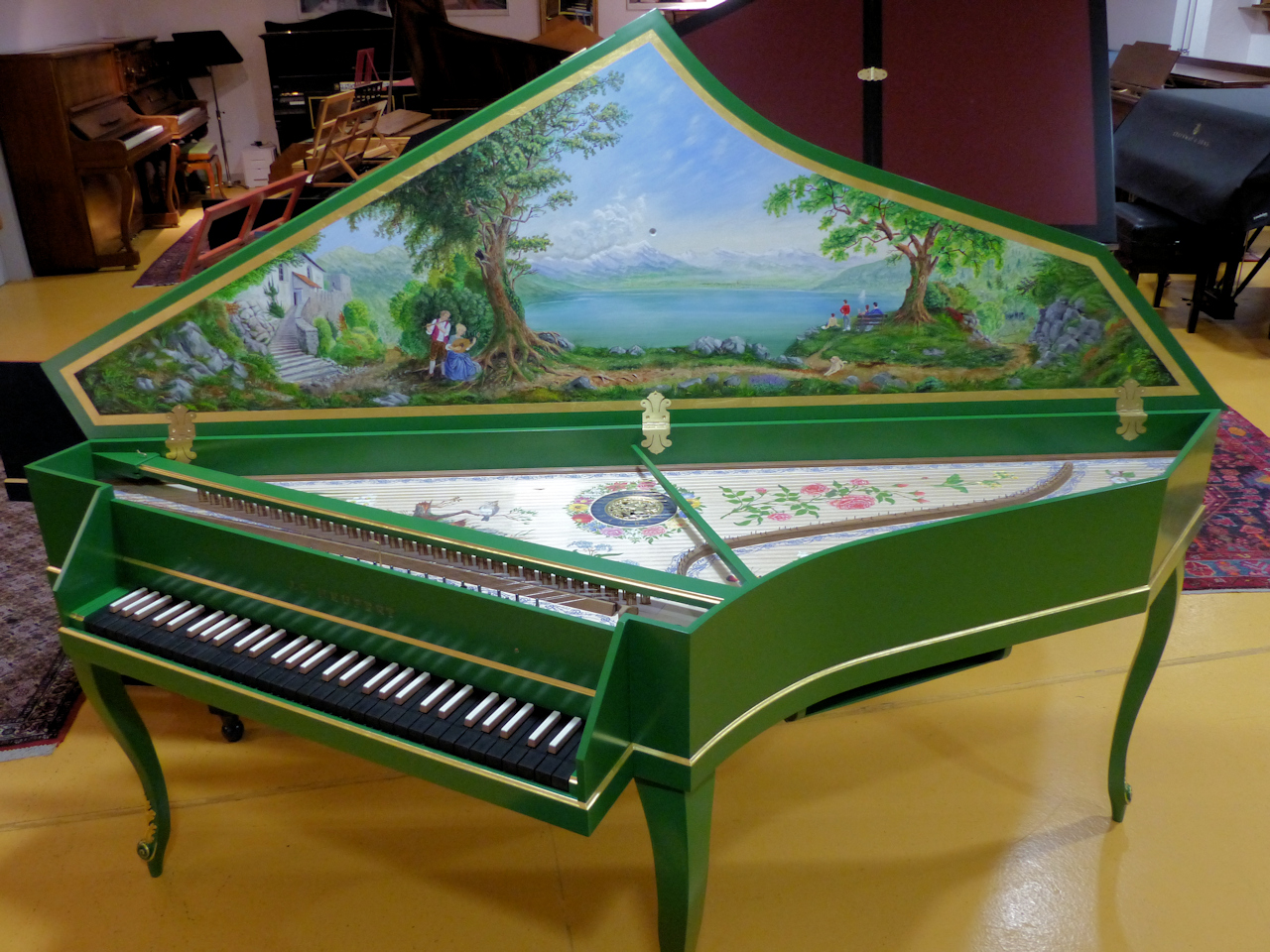
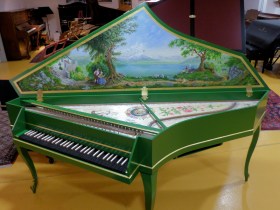
_280x220.jpg)
4_280x220.jpg)
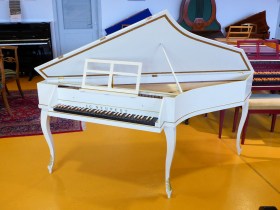
_280x220.jpg)
_280x220.jpg)
_280x220.jpg)
